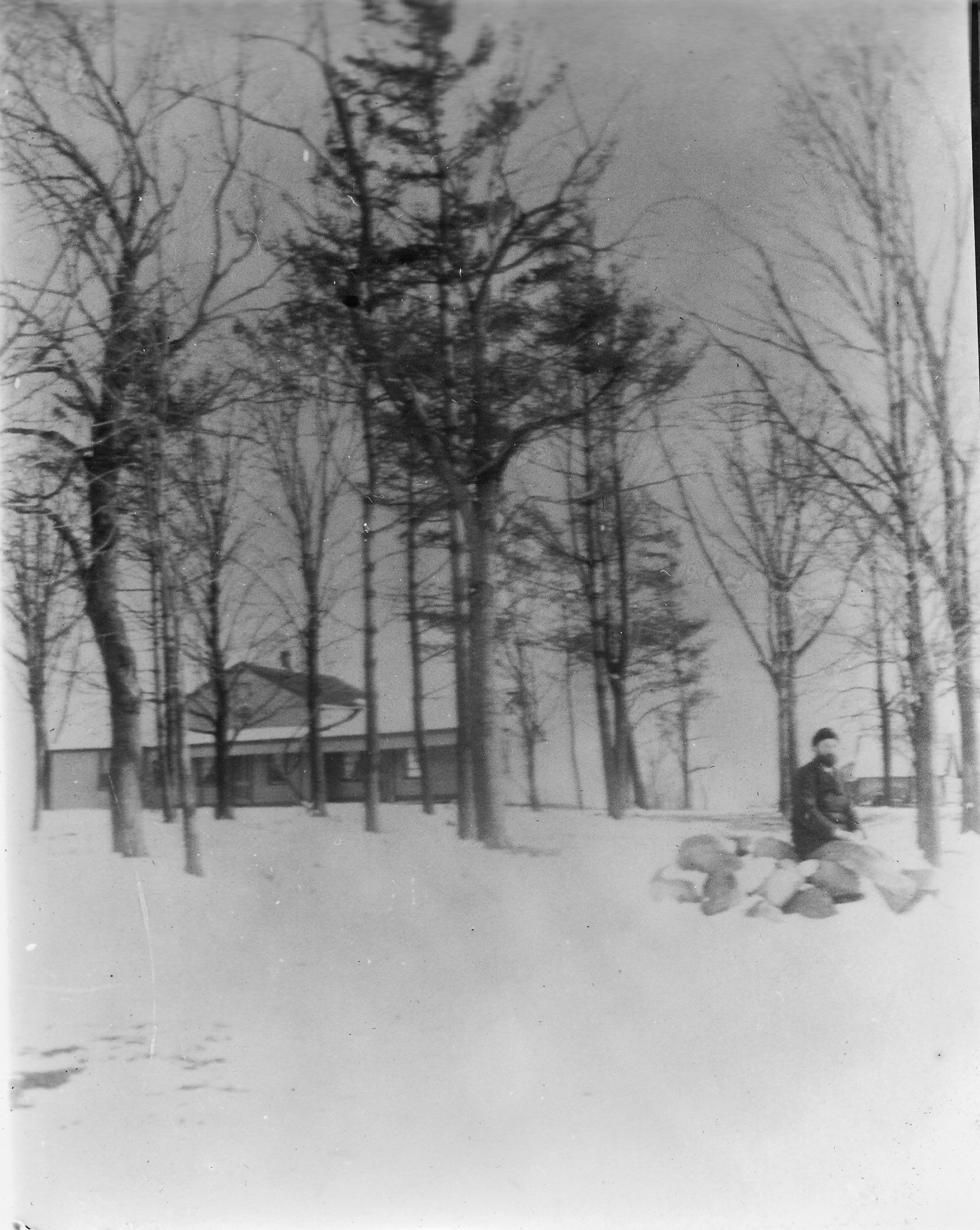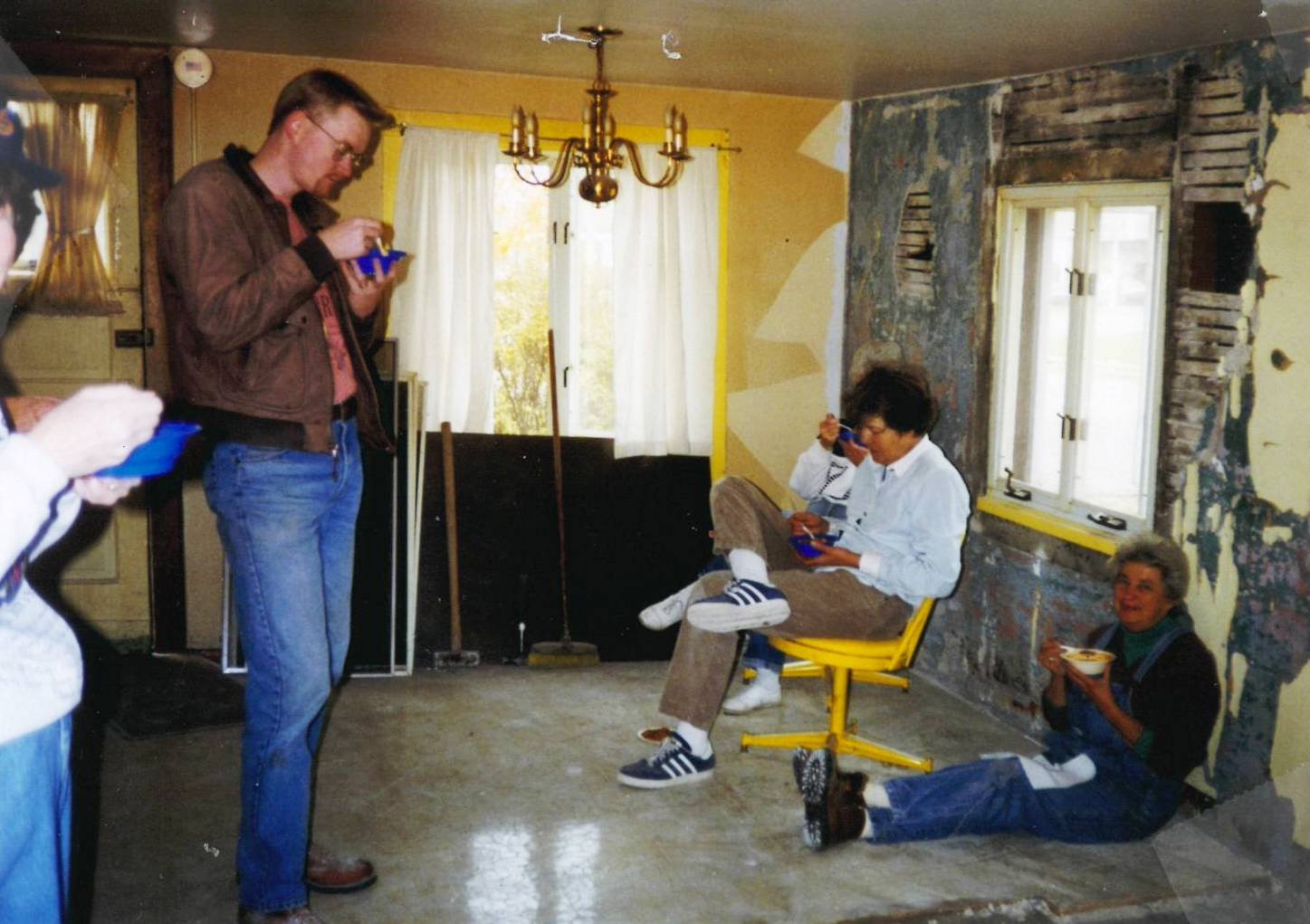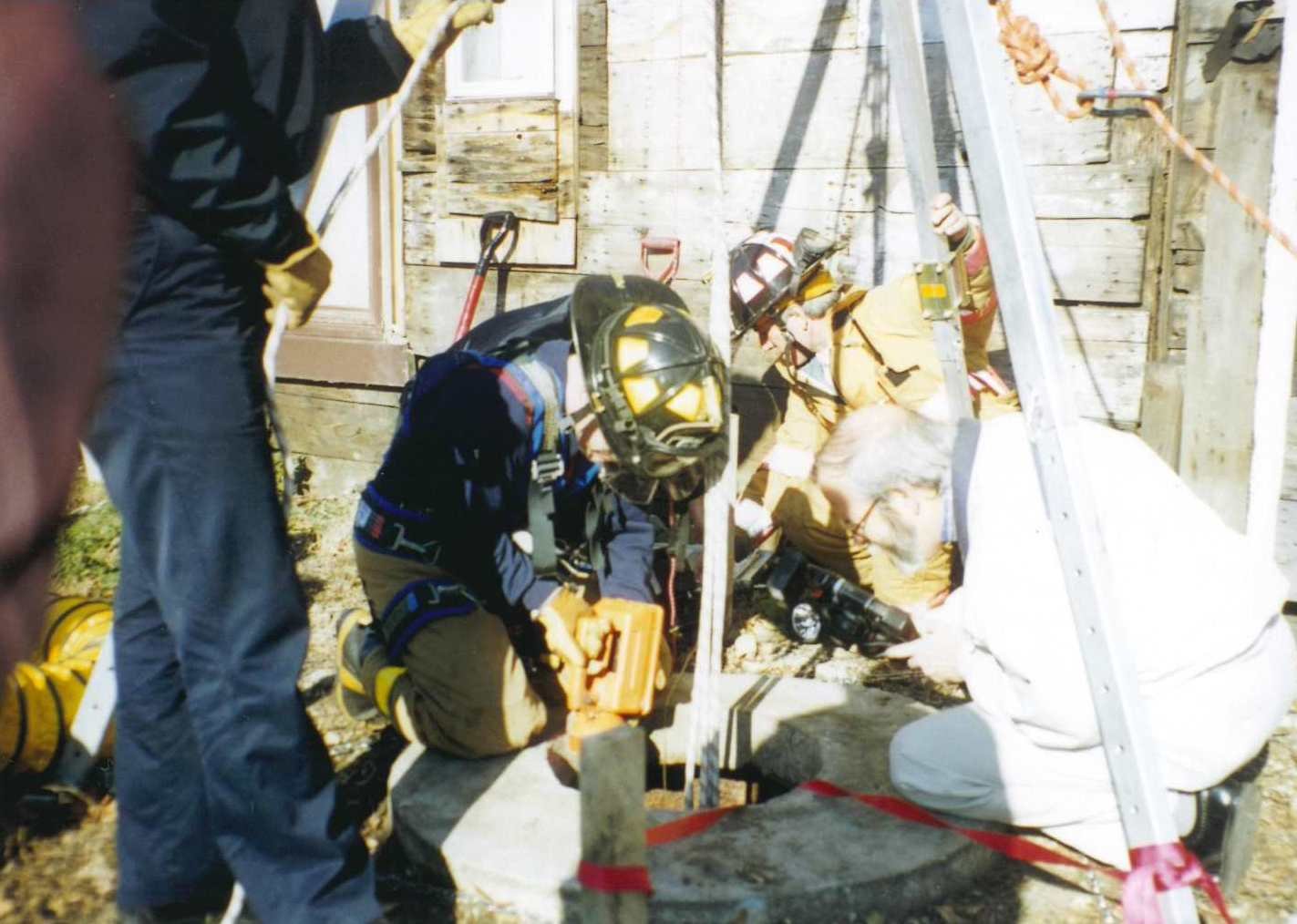This summary was written by Patricia Poskocil, May 27, 2020.
Allen Mertz inherited an old but very special house he wanted to save. His house offers were refused until Bill Mueller, Village President, found a way to help. The Village would purchase the land at St. Charles, Grace, and Parkside streets and Allen would donate the house to the Lombard Historical Society to use as a museum on Pioneer Times. It would depict the life of his great-great grandparents, Sheldon and Harriet Peck, who hand built the house in 1837 - 1839. In 1996 , the Peck house donation papers were signed.
Moving the house to Lilacia Park was seriously considered until the Village trustees agreed to buy the land, so the entire site could remain intact.
Historical Society President, Gary Bird, and Historical Commission President, Patricia Poskocil, worked to create a fund raising and restoration team. Pat asked Community Leader, Jack Brust, to help raise funds which he did immediately by contacting State Senator James “Pate” Philips and Representative Lee Daniels. Jack, Lee and Pate gained a &100,000 state grant for the Peck house to be restored as a local museum. Then Jack moved to Wisconsin in 1997, so Gary Bird and Pat Poskocil continued as Peck Restoration co-chairs.
Eventually, 50 people volunteered to aid the three year project (1996 - 1999). Many Saturday’s volunteers ate chili, donuts and shared ideas and project enthusiasm. Many photos documented the work done by all.



















What tasks were done?
Gary, Pat and Marcey Norak spoke to local groups to gain support. Inquiries were made to the Historical Preservation government leaders in Springfield. Historical guidance was obtained.
Appliances, modern bath fixtures, carpet, modern dry-wall, etc. were removed. Open holes were discovered under four layers of flooring above the cellar. Dusty, dirty work was accomplished every Saturday. (Just ask Bob Wardzala, Joel Von Haaften and Bill Jacklin.)
What is a House Restoration?
First steps were to identify and remove (carefully) modern items to find the original frame of the house. Architect, Jack Leur, and his associate, Laura Johnson, monitored the house frame as newer material was removed. The architects agreed the house era to portray was 1840 - 1868, when Sheldon Peck lived in his house.
They looked for paint patterns under removed areas, old nails left or unusual gaps or broken floors. They found all of these things. Local architect, Hal Hoyer, began sketches of the original areas now showing. Jack Jones suggested his firemen fill the cistern with sand to make it safe.
Why Did 50 People Volunteer?
Sheldon Peck and his family were pioneers who came from New York to Illinois as it opened as the westward pioneer movement. The Pecks began Lombard’s first school in the house. Peck allowed escaping “freedom seekers” to stay in the house as they escaped to Chicago and Canada. Peck painted portraits in the days before cameras. Those paintings are in national museums today. Peck’s son, Charles, helped to start the School of the Art Institute in Chicago.
Searches for old photos, family letters, and other clues to the early days of the house were done by Margot Fruehe, Edna Grench and Marian Lidicker. Mertz family members added items to the family lore. Peck’s original sketches were found on wooden boards under the exterior stucco, when it was removed - an exciting find. Chemical analysis showed the paint was made in the 1820 - 1840 era. Weekly Thursday night meetings were held to plan, assess and organize activities.
Professional geology research was done and did locate earlier site stone foundations and old-fashioned privies. The architects began to draw plans for repairs and redo’s. The house restoration plans were reviewed by the village commission, museum staff and others. Jack Jones checked village codes.
Grant writing and fund raising continued full speed ahead. A $50,000 DCCA grant was gained. Sena Krieg kept the project in the local media. Paver bricks bought by local people featured in the Lombardian newspaper. Steve Spoden of the paper videotaped restoration efforts.
First project bids were triple what the team expected and were rejected in 1997. New bids were sent out and then two contractors were selected, hired to lower the roof line to its original level and add the west room to finish the house in a historically accurate way. The interior was to be done by 1999. In 199, most of the work was completed, except interior areas.
From spring 1999 to August 1999, the team added exhibits, furniture, and accurate paint on the exterior and interior walls. Donations were sought by Joan Masterson and her furniture seeking team. Pat Poskocil other museums to gain reproductions of Peck’s portraits to hand on the walls.
Dedication Day was a warm Sunday afternoon in August 1999. Over 150 people came for the “ribbon cutting” and tour. The house and exhibits sparkled. As the Plank Road Music played, voices were enthused about the museum.






